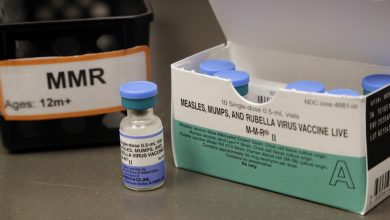Study: Toxins from Gut Damage Fat Cells and Drive Weight Gain
دراسة جديدة تكشف علاقة سموم الأمعاء بالسمنة ومرض السكري من النوع الثاني
QNA
London: Fragments of bacteria leaking into the body from the gut are damaging fat cells and driving weight gain, research suggests.
Scientists at the British Nottingham Trent University have found that these microbe fragments, known as endotoxins, are able to enter the bloodstream and directly affect how well fat cells function.
The researchers said that their findings help shed light on how endotoxins may drive obesity and associated disease such as type 2 diabetes.
They examined two types of fat cells: white fat cells, which store energy, and brown-like fat cells, which use energy and are associated with metabolic activity.
Their aim was to understand how endotoxins played a role in increasing the risk of obesity and type 2 diabetes.
They found that white fat cells derived from those with obesity were less likely to transform into brown-like fat cells, compared with fat cells from lean individuals.
The researchers said this is likely to be due to the higher levels of endotoxins found in the blood of participants with obesity.
Lead researcher Prof Mark Christian, of Nottingham Trent University’s school of science and technology, said: “Gut microbe fragments that enter the blood stream reduce normal fat cell function and their metabolic activity, which is exacerbated with weight gain, contributing to increased diabetes risk.” “It appears that as we gain weight, our fat stores are less able to limit the damage that gut microbe fragments may cause to fat cells,” he added.
Endotoxins are toxic substances present inside bacterial cell walls and released when it ruptures or disintegrates.
In a healthy gut, endotoxins are part of the lifecycle of microbes that play a key role in overall human health.
In obese people, the gut barrier is more fragile and can become leaky, allowing endotoxins into the blood and, consequently, other parts of the body.
قنا
لندن: كشفت دراسة جديدة لباحثين من جامعة /نوتنغهام ترنت/ البريطانية، أن أجزاء من بكتيريا الأمعاء السامة يمكنها التسرب إلى مجرى الدم وإلحاق الضرر بالخلايا الدهنية ما يؤدي لزيادة الوزن.
وقال الباحثون: “النتائج التي توصلنا إليها تساعد في إلقاء الضوء على كيفية تسبب السموم الداخلية في زيادة السمنة والأمراض المرتبطة بها مثل مرض السكري من النوع الثاني”.
ولمعرفة نتائج الدراسة فحص الباحثون نوعين من الخلايا الدهنية، الخلايا الدهنية البيضاء التي تخزن الطاقة، إضافة إلى الخلايا الدهنية البنية التي تستخدم الطاقة وترتبط بالنشاط الأيضي، وكان هدفهم فهم دور السموم الداخلية في زيادة خطر الإصابة بالسمنة ومرض السكري من النوع الثاني.
ووجدوا أن الخلايا الدهنية البيضاء للأشخاص المصابين بالسمنة كانت أقل عرضة للتحول إلى خلايا دهنية بنية مقارنة بخلايا الأفراد النحيفين، وذلك بسبب المستويات المرتفعة من السموم الداخلية الموجودة في دم المشاركين المصابين بالسمنة.
ومن جهته قال مارك كريستيان، كبير الباحثين في الدراسة، “فتات ميكروبات الأمعاء الذي يدخل مجرى الدم يقلل وظيفة الخلايا الدهنية الطبيعية ونشاطها الأيضي، والذي يتفاقم مع زيادة الوزن، مما يساهم في زيادة خطر الإصابة بمرض السكري”.
وتابع: “يبدو أنه مع زيادة الوزن، تصبح مخازن الدهون أقل قدرة على الحد من الأضرار التي قد تسببها أجزاء ميكروبات الأمعاء للخلايا الدهنية”.
يذكر أن السموم الداخلية هي مواد سامة موجودة داخل جدران الخلايا البكتيرية وتتسرب عند تمزقها أو تفككها. ففي الأمعاء السليمة، تعتبر هذه السموم جزءا من دورة حياة الميكروبات التي تلعب دورا رئيسيا في صحة الإنسان بشكل عام، ولكن لدى الأشخاص الذين يعانون من السمنة المفرطة، يكون حاجز القناة الهضمية أكثر هشاشة، ما يسمح للسموم الداخلية بالدخول إلى الدم وبالتالي إلى أجزاء أخرى من الجسم.




